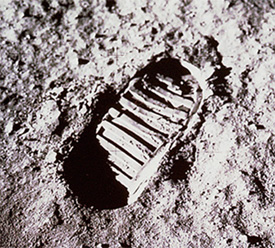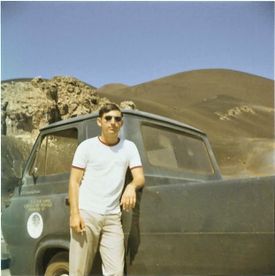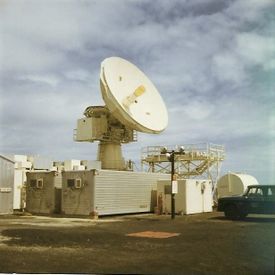First-Hand:George L. Gentzler Jr. Apollo Experiences

Submitted by George L Gentzler Jr., Life Member
At the height of the Space Race, I was an undergraduate in the Engineering Science Department at Florida State University. I took part in their Co-operative Education Program for seven school terms. I was employed by Pan American Airways Aerospace Services Division, which was responsible for operations and maintenance of the Eastern Test Range. My assignments were in the Tech Lab at Patrick Air Force Base, Cape Kennedy and on down range tracking stations. Much of my time was spent on Department of Defense projects, including Minuteman-III and Poseidon launches. However, I also had the opportunity to participate in the Apollo program.
During the summer of 1968, I was in Field Engineering at Cape Kennedy, which provided instructions and parts lists for the in-house shops. Some of my work applied to pad safety changes at Launch Complex 34 for the Apollo 7 flight. The changes were initiated after the Apollo 1 cabin fire. One request was to supply power, via nitrogen purged lines, in the access arm of the umbilical tower for a water spray system. This system was for fire suppression over the route from the white room to the tower elevator located at the 220-foot level. Another request was to create an exit through a wall inside the blockhouse that ran along computer and communications equipment. This exit was for emergency egress by technicians working behind the equipment racks. In addition, there was some work on the service structure, allowing me to get a close look at the Saturn 1B rocket.
I also accompanied engineers testing a slide wire installed for immediate escape from the umbilical tower to the edge of the launch complex. While having little involvement in test runs, I do remember something dropped from atop the umbilical tower and landed very nearby. Immediately after, I was told that my hard hat would have been useless.
During the summer of 1969, I was in Operations at Tracking Station 12 on Ascension Island, 5000 miles down range in the South Atlantic. Besides the first moon landing, this assignment presented a unique way to learn about the instrumentation sites and base support activities. As one example, I helped to launch a sounding rocket from the weather station, used in conjunction with radar to collect winds aloft data.
For the Apollo 11 mission, I assisted at the operations console to acknowledge the countdown and report station status for the Saturn V launch. After the launch, I went along to the radar site (C-band) tracking the S-IVB stage during translunar injection. We intently watched the oscilloscope displaying beacon signals for radars from across the United States to Africa. On a remote, volcanic island with lunar-like landscapes, this seemed a fitting way to see Apollo 11 begin its voyage. After this, much time was spent in the operations room listening to the mission via NASA communications. We were given a day off work and, later, I received a certificate of participation.
Back to Human Space Travel Primary Sources

